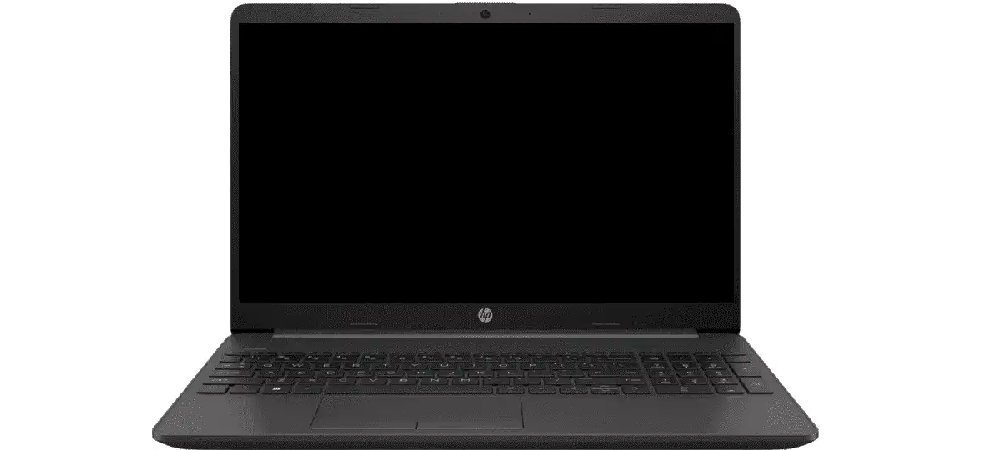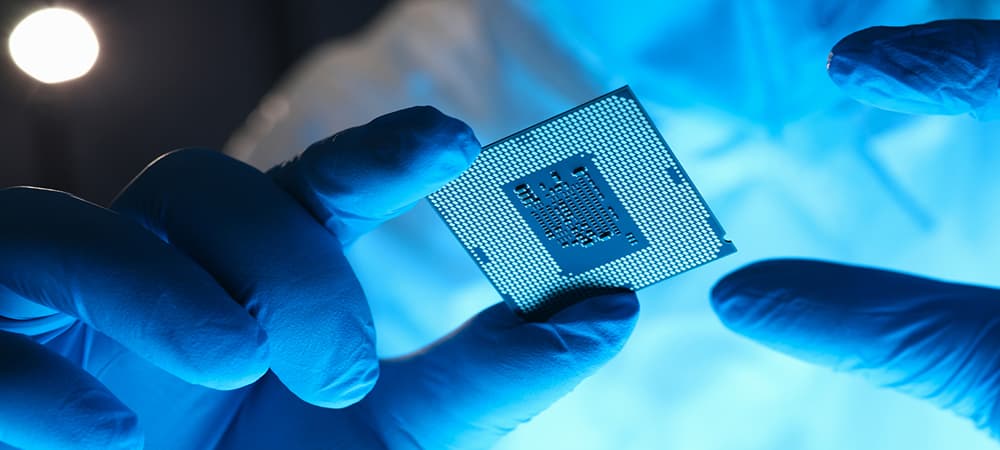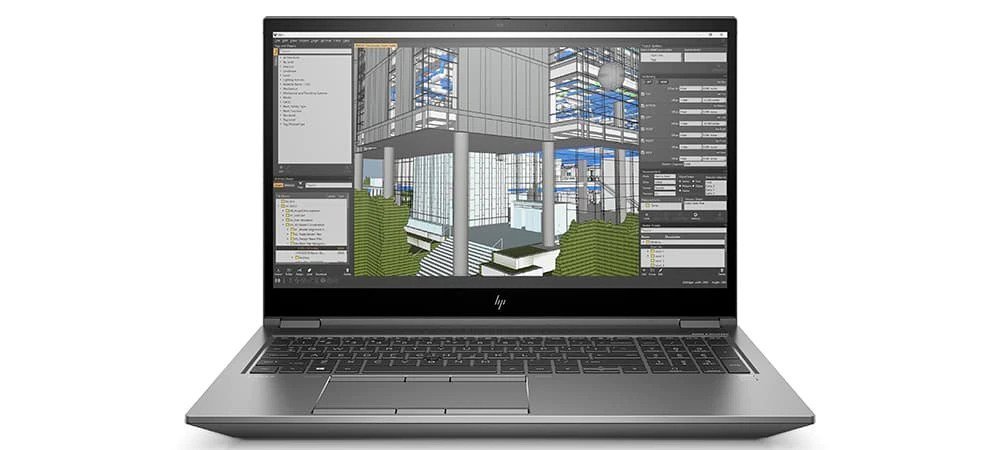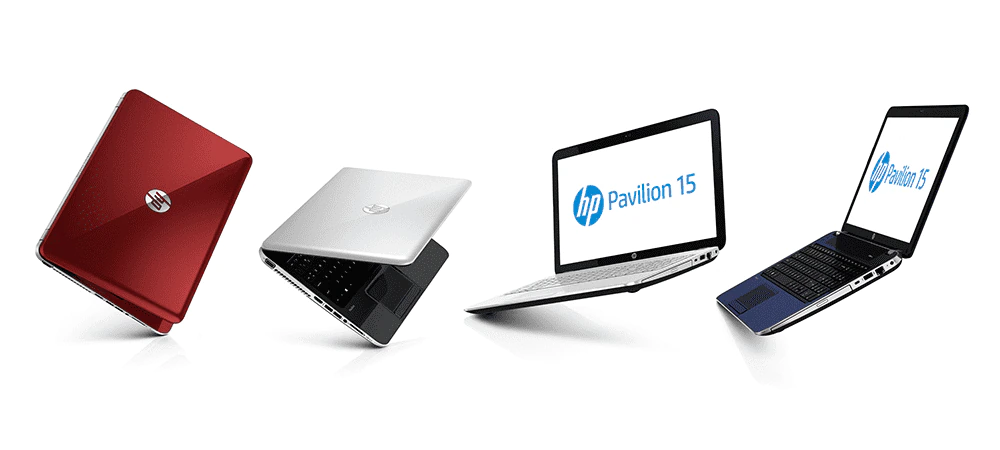Thank you for visiting the MALAYSIA HP Store
-
Contact Us
CONTACT USCall us
- Sales
- 1800 88 4889
- Technical support
- 1800 88 4889
Mon-Fri 8:30AM to 5:30PM
(exc. Public Holidays)
Chat with us- Our specialist are here to help
- Live chat
- Sales
- 60166999350(WhatsApp)
-

Mon-Fri 8.30am - 5.30pm
(exc. Public Holidays)
Live product demo
Store finder Locate our storesSubmit feedback We value your opinion! - Location
- My Account
How to Fix a Black Screen on Your Computer


Computers are an essential part of our modern lives. Be it a custom-built PC or a personal laptop, they provide seamless solutions for many of our needs, like online shopping, web-based classrooms, virtual meetings, and so much more.
That said, many forget that computers require regular ‘check-ups’ too, done mainly by undergoing scheduled scans or running performance-based apps to evaluate their overall condition. Though some might take this lightly, a compromised computer will not work as efficiently as before and, in certain cases, can lead to the dreaded black screen of death.
In this article, we’ll explore the black screen of death, the reasons some computers experience it, and provide some fixes.
What is the ‘black screen of death?’
Simply put, a black screen of death is when a computer is stuck on a blank, black screen. The commands or button prompts do not work, and the PC becomes unresponsive.
There are many reasons why this can happen, usually due to system errors that conflict with the protocols of a computer’s operating system (OS), causing it to malfunction. This forces a hard PC shutdown, which might affect its health if prompted too often.
In worst-case scenarios, constantly forcing a computer to shut down can lead to file corruption or hardware damages, which are primary indicators for you to consider buying a new laptop/desktop. Other minor issues can also occur, but different factors can cause computers to slow down, so a complete system diagnostic is usually the best way to identify problems.
If your computer consistently freezes at a black screen, you should identify the main issues immediately before any long-term harm can be inflicted on your PC.
Reasons for a black screen on your computer
Most of the time, a computer black screen occurs due to recent changes made to the PC. Check if it’s one of the following reasons that’s making your laptop screen black:
1. Connection issues with the monitor
Sometimes, a black screen occurs due to an interrupted connection between the computer and its display monitor. This often happens to desktop users accidentally dislodging the cable from its proper port, either on the computer case, the monitor itself, or both.
This could also happen when using an external monitor for a laptop, especially if the cable is damaged.
2. Display device/adapter problems
A faulty display device or video adapter can also prevent a computer from displaying images, prompting a black screen. This is often the case when the PC produces sounds normally but cannot project any visuals.
A display device is an external apparatus that produces visual output, such as an LCD monitor. On the other hand, a video adapter is dedicated hardware - such as a graphics card - that creates those images before sending them to a display device.
3. Faulty system update or software/app installation
A complete system update or new software installation can also force a black screen error. This usually happens due to conflicting commands or coding that might disrupt the computer’s main programming, interrupting some critical processes as a result.
Computers should always be backed up, especially important files, before making any major changes to the PC’s system.
Ways to solve the black screen of death
The ideal fix can be applied by identifying the most likely causes of the computer’s black screen prompt. This is important because some fixes require tweaks to be made to the computer’s system, including the BIOS (Basic Input/Output System), depending on the issue.
Consider external causes first, such as a damaged display cable, before exploring technical possibilities. With that in mind, here are some possible ways for you to resolve a frozen black screen on a computer:
If the black screen occurs while booting up the computer before Windows sign-in
1. Fix connection issues with the monitor
- Check the computer’s video cable for any external damage.
- If there’s none, remove and reconnect the video cable from the computer to the monitor to see if that does the trick.
- If the screen is still blank, test both the cable and the monitor by doing the following:
- Cable
- Use another cable available at home (used by the TV, another laptop, etc.) to connect the computer with the monitor.
- If the monitor works, the initial cable is damaged and needs to be replaced.
- Monitor
- Test the video cable between the computer and a different monitor (the TV, another monitor, etc.).
- If the new monitor displays images perfectly, the original monitor is damaged and needs to be replaced.
2. Refresh the screen via Windows key sequence
- Click the CapsLock or NumLock keys to see if any indicator light turns on (the computer is properly running but cannot activate the screen).
- If any of the keys’ lights turn on, then:
- Press Ctrl + Alt + Delete, prompting the administrator menu to appear.
- Select your account and sign in as usual.
- If unable to sign in, click the “Power” icon and then choose “Restart” to reboot the PC.
- If the computer freezes at a black screen again, the last resort is to forcibly shut down the PC by pressing and holding the computer’s power button for around 10 seconds.
- If any of the keys do not light up, proceed to:
- Manually shut down the computer by pressing its power button for around 10 seconds.
- Remove the power adapter from the computer and its power source for about 30 seconds.
- Plug it back in, then restart.
- If you are still stuck on the black screen, try another fix below.
3. Roll back the display driver/adapter (via Safe Mode)
- A recent change to your PC - most notably a Windows update - can stop the display adapter (graphics card, etc.) from functioning correctly.
- If it’s still stuck on an empty, black screen, a computer restart in Safe Mode will be required to safely revert the display adapter’s driver to a previous version.
- After booting the PC in Safe Mode, open the Search bar and type in “Device Manager.”
- Select the Device Manager program, and find Display Adapters.
- Under the Display Adapter tab, all the PC’s current display adapters will be shown (e.g., Intel HD 4000, Nvidia RTX 3060).
- Right-click on the display adapter that is suspected to be causing the black screen problem, and then open Properties.
- Find the Driver tab, select Roll Back Driver, and press “Yes” to execute the process.
- Once the process is done, restart the computer to see if the black screen problem has been fixed.
4. Prompt a System Restore (Automatic Repair mode)
- After a couple of forced shutdowns - due to failure to boot up properly after getting stuck at a black screen - the computer will automatically enter its Automatic Repair phase during the next restart.
- It will attempt to troubleshoot black screen issues that could interrupt the computer’s safe startup, giving a few options to choose from.
- If the Automatic Repair screen appears, users can instruct Windows to return to its previous working state via System Restore. Here’s how to do it:
- Click on Advanced Options from the actions provided.
- Go to Troubleshoot.
- Proceed to Advanced Options again.
- Choose System Restore among the many solutions shared.
- In Automatic Repair, users can also reset the computer to its basic state or opt for other repair actions instead of System Restore, such as Startup Repair or System Image Recovery, if necessary.
If the black screen occurs after successfully signing in to Windows
1. Refresh the screen via Windows key sequence
- This time, press the Windows key + Ctrl + Shift + b to force a refresh of the video display/adapter.
- You will hear a short beep before the screen turns off, restarting afterwards. If successful, the black screen issue will be resolved.
- If the black screen persists, move on to another method.
2. Restart the Windows Explorer program
- If a frozen Windows Explorer program could be the cause behind the PC’s black screen error, try restarting it:
- Press Ctrl + Alt + Delete to open the admin menu.
- Select Task Manager.
- Open the Processes tab, and then highlight Windows Explorer.
- Right-click Windows Explorer and choose Restart.
- If the monitor continues to show a black screen, try starting a new Windows Explorer program instead, using Task Manager:
- Open File located in the top-left corner.
- Choose “Run new task.”
- Type “explorer.exe,” and then click “OK.”
3. Roll back the display driver/adapter (via Safe Mode)
- If a recent update to the PC’s display driver is a likely cause, users can revert it to a previous working version by following the necessary steps:
- Turn on the computer in Safe Mode.
- Use the Search bar to type in “Device Manager.”
- Open the Device Manager program, and then select Display Adapters.
- Right-click on the suspected display adapter (e.g. AMD Radeon HD 7600M, etc.) and choose Properties.
- Click on the Driver tab, select Roll Back Driver, and press “Yes” when prompted.
- Restart the computer to check if this resolves the black screen problem.
4. Prompt a System Restore (Automatic Repair mode)
- After failing to start multiple times, the desktop/laptop will automatically enter the Automatic Repair screen on the next boot up/restart from a manual shutdown.
- If so, here’s how to prompt a System Restore from the Automatic Repair screen:
- Choose Advanced Options on the screen.
- Select Troubleshoot.
- Click on Advanced Options again.
- Select System Restore to revert Windows to a previous working state.
- Users can also try Startup Repair and Startup Settings if deemed appropriate.
5. Uninstall recent updates (via Safe Mode)
- To remove any installed updates that might be disrupting your PC from booting up properly, the process is fairly simple:
- Open the computer in Safe Mode - it’s very important to be in this mode before starting.
- Click on the Start/Windows icon, and then go to Settings.
- Choose Update & Security, and open Windows Update.
- Click on “View update history” and proceed to Uninstall Updates.
- Select the previously installed update to be removed from the list provided, and then prompt Uninstall.
- Press “Yes” to confirm, and wait for the update to be uninstalled.
- Restart the computer to see if Windows can now start up normally.
Conclusion
It is hard to know which black screen fix is the right solution for your PC without identifying its probable causes first. In certain circumstances, users might even be forced to make changes inside the computer’s BIOS instead, which can be intimidating for some.
A computer boot by using a USB can also be performed, especially if the PC still fails to resolve its black screen issue. However, it might be best to consult a professional technician to avoid risking damage to the computer.
Prevention is always better than cure, so be careful when downloading third-party files or apps that might seem suspicious. If possible, always install new programs directly from the official source, and back up your computer regularly to safeguard important folders from being corrupted.
If you’re looking for more useful advice like DIY screen repairs, visit HP® Tech Takes for all the best insights!
Reasons for a black screen on your computer
Most of the time, a computer black screen occurs due to recent changes made to the PC. Check if it’s one of the following reasons that’s making your laptop screen black:
1. Connection issues with the monitor
Sometimes, a black screen occurs due to an interrupted connection between the computer and its display monitor. This often happens to desktop users accidentally dislodging the cable from its proper port, either on the computer case, the monitor itself, or both.
This could also happen when using an external monitor for a laptop, especially if the cable is damaged.
2. Display device/adapter problems
A faulty display device or video adapter can also prevent a computer from displaying images, prompting a black screen. This is often the case when the PC produces sounds normally but cannot project any visuals.
A display device is an external apparatus that produces visual output, such as an LCD monitor. On the other hand, a video adapter is dedicated hardware - such as a graphics card - that creates those images before sending them to a display device.
3. Faulty system update or software/app installation
A complete system update or new software installation can also force a black screen error. This usually happens due to conflicting commands or coding that might disrupt the computer’s main programming, interrupting some critical processes as a result.
Computers should always be backed up, especially important files, before making any major changes to the PC’s system.
Ways to solve the black screen of death
The ideal fix can be applied by identifying the most likely causes of the computer’s black screen prompt. This is important because some fixes require tweaks to be made to the computer’s system, including the BIOS (Basic Input/Output System), depending on the issue.
Consider external causes first, such as a damaged display cable, before exploring technical possibilities. With that in mind, here are some possible ways for you to resolve a frozen black screen on a computer:
If the black screen occurs while booting up the computer before Windows sign-in
1. Fix connection issues with the monitor
- Check the computer’s video cable for any external damage.
- If there’s none, remove and reconnect the video cable from the computer to the monitor to see if that does the trick.
- If the screen is still blank, test both the cable and the monitor by doing the following:
- Cable
- Use another cable available at home (used by the TV, another laptop, etc.) to connect the computer with the monitor.
- If the monitor works, the initial cable is damaged and needs to be replaced.
- Monitor
- Test the video cable between the computer and a different monitor (the TV, another monitor, etc.).
- If the new monitor displays images perfectly, the original monitor is damaged and needs to be replaced.
2. Refresh the screen via Windows key sequence
- Click the CapsLock or NumLock keys to see if any indicator light turns on (the computer is properly running but cannot activate the screen).
- If any of the keys’ lights turn on, then:
- Press Ctrl + Alt + Delete, prompting the administrator menu to appear.
- Select your account and sign in as usual.
- If unable to sign in, click the “Power” icon and then choose “Restart” to reboot the PC.
- If the computer freezes at a black screen again, the last resort is to forcibly shut down the PC by pressing and holding the computer’s power button for around 10 seconds.
- If any of the keys do not light up, proceed to:
- Manually shut down the computer by pressing its power button for around 10 seconds.
- Remove the power adapter from the computer and its power source for about 30 seconds.
- Plug it back in, then restart.
- If you are still stuck on the black screen, try another fix below.
3. Roll back the display driver/adapter (via Safe Mode)
- A recent change to your PC - most notably a Windows update - can stop the display adapter (graphics card, etc.) from functioning correctly.
- If it’s still stuck on an empty, black screen, a computer restart in Safe Mode will be required to safely revert the display adapter’s driver to a previous version.
- After booting the PC in Safe Mode, open the Search bar and type in “Device Manager.”
- Select the Device Manager program, and find Display Adapters.
- Under the Display Adapter tab, all the PC’s current display adapters will be shown (e.g., Intel HD 4000, Nvidia RTX 3060).
- Right-click on the display adapter that is suspected to be causing the black screen problem, and then open Properties.
- Find the Driver tab, select Roll Back Driver, and press “Yes” to execute the process.
- Once the process is done, restart the computer to see if the black screen problem has been fixed.
4. Prompt a System Restore (Automatic Repair mode)
- After a couple of forced shutdowns - due to failure to boot up properly after getting stuck at a black screen - the computer will automatically enter its Automatic Repair phase during the next restart.
- It will attempt to troubleshoot black screen issues that could interrupt the computer’s safe startup, giving a few options to choose from.
- If the Automatic Repair screen appears, users can instruct Windows to return to its previous working state via System Restore. Here’s how to do it:
- Click on Advanced Options from the actions provided.
- Go to Troubleshoot.
- Proceed to Advanced Options again.
- Choose System Restore among the many solutions shared.
- In Automatic Repair, users can also reset the computer to its basic state or opt for other repair actions instead of System Restore, such as Startup Repair or System Image Recovery, if necessary.
If the black screen occurs after successfully signing in to Windows
1. Refresh the screen via Windows key sequence
- This time, press the Windows key + Ctrl + Shift + b to force a refresh of the video display/adapter.
- You will hear a short beep before the screen turns off, restarting afterwards. If successful, the black screen issue will be resolved.
- If the black screen persists, move on to another method.
2. Restart the Windows Explorer program
- If a frozen Windows Explorer program could be the cause behind the PC’s black screen error, try restarting it:
- Press Ctrl + Alt + Delete to open the admin menu.
- Select Task Manager.
- Open the Processes tab, and then highlight Windows Explorer.
- Right-click Windows Explorer and choose Restart.
- If the monitor continues to show a black screen, try starting a new Windows Explorer program instead, using Task Manager:
- Open File located in the top-left corner.
- Choose “Run new task.”
- Type “explorer.exe,” and then click “OK.”
3. Roll back the display driver/adapter (via Safe Mode)
- If a recent update to the PC’s display driver is a likely cause, users can revert it to a previous working version by following the necessary steps:
- Turn on the computer in Safe Mode.
- Use the Search bar to type in “Device Manager.”
- Open the Device Manager program, and then select Display Adapters.
- Right-click on the suspected display adapter (e.g. AMD Radeon HD 7600M, etc.) and choose Properties.
- Click on the Driver tab, select Roll Back Driver, and press “Yes” when prompted.
- Restart the computer to check if this resolves the black screen problem.
4. Prompt a System Restore (Automatic Repair mode)
- After failing to start multiple times, the desktop/laptop will automatically enter the Automatic Repair screen on the next boot up/restart from a manual shutdown.
- If so, here’s how to prompt a System Restore from the Automatic Repair screen:
- Choose Advanced Options on the screen.
- Select Troubleshoot.
- Click on Advanced Options again.
- Select System Restore to revert Windows to a previous working state.
- Users can also try Startup Repair and Startup Settings if deemed appropriate.
5. Uninstall recent updates (via Safe Mode)
- To remove any installed updates that might be disrupting your PC from booting up properly, the process is fairly simple:
- Open the computer in Safe Mode - it’s very important to be in this mode before starting.
- Click on the Start/Windows icon, and then go to Settings.
- Choose Update & Security, and open Windows Update.
- Click on “View update history” and proceed to Uninstall Updates.
- Select the previously installed update to be removed from the list provided, and then prompt Uninstall.
- Press “Yes” to confirm, and wait for the update to be uninstalled.
- Restart the computer to see if Windows can now start up normally.
Conclusion
It is hard to know which black screen fix is the right solution for your PC without identifying its probable causes first. In certain circumstances, users might even be forced to make changes inside the computer’s BIOS instead, which can be intimidating for some.
A computer boot by using a USB can also be performed, especially if the PC still fails to resolve its black screen issue. However, it might be best to consult a professional technician to avoid risking damage to the computer.
Prevention is always better than cure, so be careful when downloading third-party files or apps that might seem suspicious. If possible, always install new programs directly from the official source, and back up your computer regularly to safeguard important folders from being corrupted.
If you’re looking for more useful advice like DIY screen repairs, visit HP® Tech Takes for all the best insights!
- Sales
- 1800 88 4889
- Technical support
- 1800 88 4889
Mon-Fri 8:30AM to 5:30PM
(exc. Public Holidays)
- Our specialist are here to help
- Live chat
- Sales
- 60166999350(WhatsApp)
-

Mon-Fri 8.30am - 5.30pm
(exc. Public Holidays)
Live product demo














